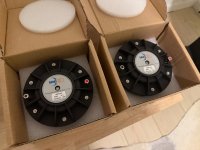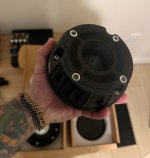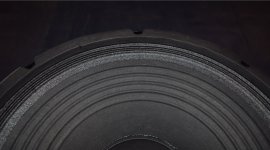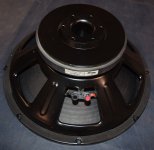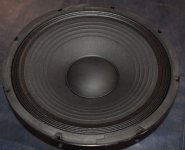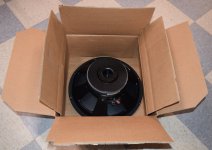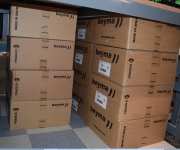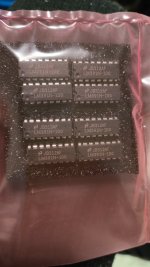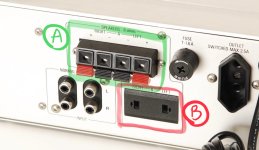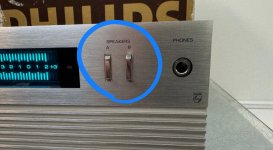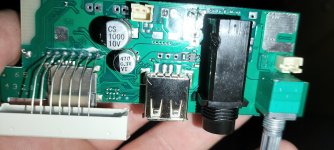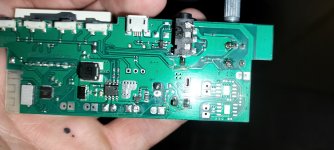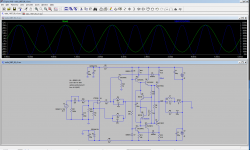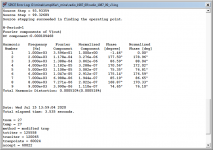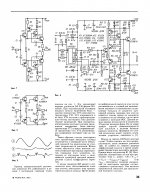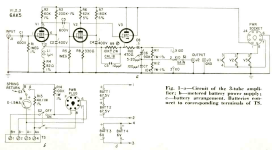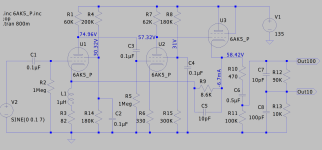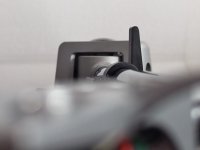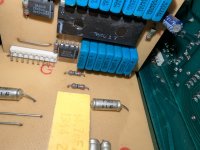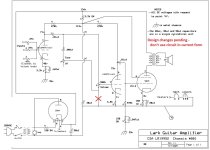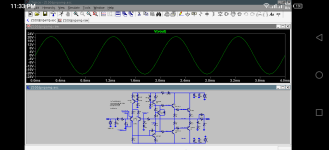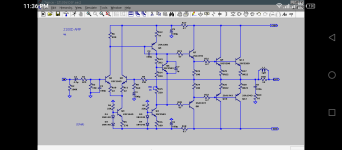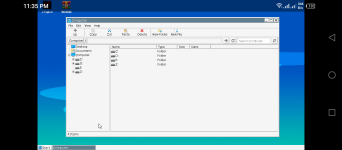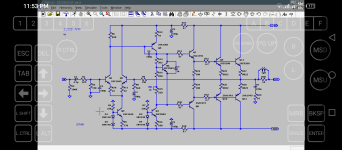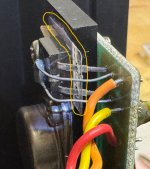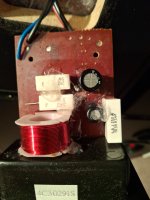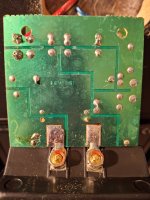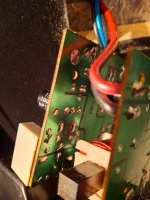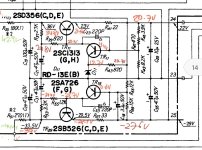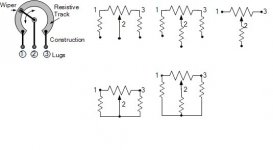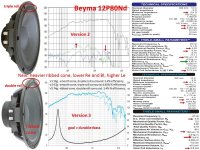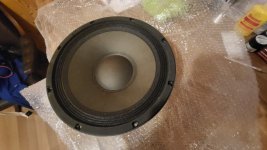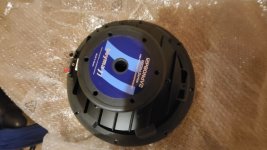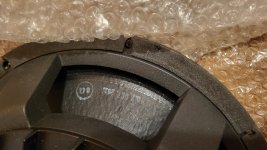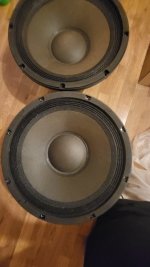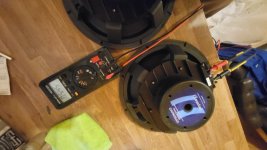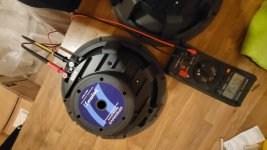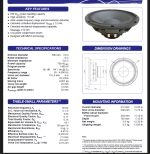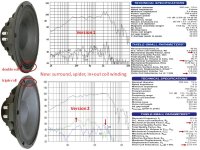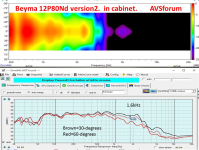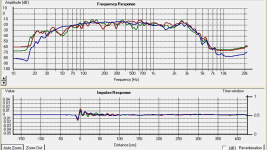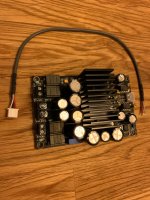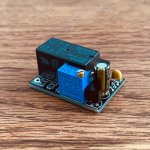Has anyone tried using foam board (paper laminated with foam core) as quick and dirty speaker enclosures? There is something really satisfying in using nothing more than an x-acto knife and a hot melt glue gun to build transmission lines, horns, etc to try out designs on smaller 3 in and 2 in low power full range drivers. Interestingly, they actually sound pretty good and weigh nothing compared to mdf. I am just wondering if I am the only trying this sort of stuff before cutting real wood. My latest build is a stereo pair transmission line that is very flat and hangs like a picture on a wall. Lots of fun and very quick and clean. The foam core actually has built in damping capabilities. I do find that it sometimes resonates like a guitar body but that is not necessarily bad.
I am editing this first post to show what is possible with foam core and hot melt glue - the elusive Cornu spiral horn.... Read on if you are interested in this wonderful speaker and have a day or two to try building it.
For folks in France, FC board is called "carton ou de mousse"
Erreur 404
In Germany, try here:
Attention Required! | Cloudflare
Index:
Cornu spiral BLH original vs Smooth Curve
Ever think of building a Cornu Spiral horn? Now you can! - Page 3 - diyAudio
pdf plan for Cornu spiral by Planet10 can be found here:
Foam Core Board Speaker Enclosures? - Page 23 - diyAudio
Micro 14in Cornu with 2in driver from Logitech S120 (Dec 2012):
Ever think of building a Cornu Spiral horn? Now you can! - Page 6 - diyAudio
Flat wall mount stereo MLTL with Vifa TC9FD
http://www.diyaudio.com/forums/full-range/223313-foam-core-board-speaker-enclosures-147.html#post3400954
Flat BIB or FIB with Vifa
http://www.diyaudio.com/forums/full-range/66173-terry-cains-bib-why-does-work-does-anyone-have-those-fostex-craft-handbooks-516.html#post3344893
FIB alternate without V channel
http://www.diyaudio.com/forums/full-range/66173-terry-cains-bib-why-does-work-does-anyone-have-those-fostex-craft-handbooks-512.html#post3339813
Folded bookshelf MLTL with Vifa
http://www.diyaudio.com/forums/full-range/232778-fostex-fe83en-right-small-box.html#post3427671
FH3 Inspired Floorstanding Back Horn with Vifa
FH3-inspired Foam Core Mini Build and here
http://www.diyaudio.com/forums/full-range/227460-fh3-inspired-foam-core-mini-build-3.html#post3339779
Mini Karlsonator (0.53x Scale) with dual Vifa TC9FD's
http://www.diyaudio.com/forums/full-range/237948-speaker-kicks-butt-large-spaces-21.html#post3560234
http://www.diyaudio.com/forums/full-range/237948-speaker-kicks-butt-large-spaces-21.html#post3560234
Mini Karlsonator (0.4x Scale) with single Vifa TC9FD
http://www.diyaudio.com/forums/full-range/239338-mini-karlsonator-0-53x-dual-tc9fds-16.html#post3722988
Nautaloss spiral sealed-end TL Reference Monitor (200 Hz to 20 kHz) with Vifa TC9FD
The Nautaloss Ref Monitor
Teardrop Shaped Sealed Monitor (200 Hz to 20 kHz) with Vifa TC9FD
http://www.diyaudio.com/forums/full-range/223313-foam-core-board-speaker-enclosures-208.html#post3739273
Nautaloss sealed quad driver push-pull sub:
http://www.diyaudio.com/forums/full-range/247598-nautaloss-ref-monitor-6.html#post3750186
XPS Foam & Foam Core MLTL using PE's 6.5 in Polycone Woofer (Buyouts):
http://www.diyaudio.com/forums/full-range/223313-foam-core-board-speaker-enclosures-210.html#post3755545
The simplest FC speaker ever - "The Dual Exciter OB Cheap Thrills" speaker:
http://www.diyaudio.com/forums/full-range/223313-foam-core-board-speaker-enclosures-225.html#post3840132
Dual Chamber Reflex with Curvy Walls - Viva la Vifa! - nice desktop monitor speaker:
Viva la Vifa! Curvy Cabinet DCR with TC9FD
Single Speaker Stereo (SSS) - matrix 3 channel:
http://www.diyaudio.com/forums/full-range/223313-foam-core-board-speaker-enclosures-239.html#post3961261
A real 40 Hz (-3dB) 113dB SPL capable sub woofer (slot loaded band pass) that weighs less than a pound (excluding driver weight):
Light as Air Slot Loaded Band Pass Sub
A 175Hz 28in wide x 17in tall x 22in deep tractrix horn for the 5MR450NDY, a full range horn capable of 300Hz to 15kHz and +125dB:
http://www.diyaudio.com/forums/full-range/259293-prv-5mr450-ndy-fast-applications-10.html#post4033969
A tractrix synergy horn - the Trynergy, the best sounding speaker I have built out of foam core to date. Perhaps my most ambitious speaker but surprisingly easy to build:
http://www.diyaudio.com/forums/full-range/261427-presenting-trynergy-full-range-tractrix-synergy.html
The Hypercube speaker with a TC9FD - nice 150Hz to 18kHz speaker good for HT satellites or desktop FAST:
http://www.diyaudio.com/forums/full-range/265053-hypercube-loudspeakers-12.html#post4128571
Mass-damped Hypercube with PRV 5MR450NDY - 250Hz to 15kHz 95dB sensitive tops for a FAST:
http://www.diyaudio.com/forums/full-range/265053-hypercube-loudspeakers-27.html#post4134697
Lance TL with RS100-4 (Dec 21, 2014):
http://www.diyaudio.com/forums/full-range/223313-foam-core-board-speaker-enclosures-255.html#post4159850
DCR stereo Bluetooth speaker with RS100P-4 (Jan. 6. 2015):
http://www.diyaudio.com/forums/multi-way/267585-project-big-bluetooth-spkr.html#post4176790
The Dagger short TL - a very open sounding hifi FAST top (Jan 20, 2015):
http://www.diyaudio.com/forums/full-range/268037-fast-tl-8.html#post4192688
XKi - X's ab initio Karlson 6th order band pass with RS100 (Jan 24, 2015):
http://www.diyaudio.com/forums/full-range/268524-xki-xs-ab-initio-karlson-6th-order-bandpass.html
XKi - Dual Tangband W5-876SE subwoofer (Feb 16, 2016):
XKi - X's ab initio Karlson 6th Order Bandpass
KaZba (Karlson aperture Z-baffle) Dipole FAST (March 25, 2015):
http://www.diyaudio.com/forums/full-range/271011-rockin-kazba-dipole-k-aperture-z-baffle-dipole.html
10F/8424 and RS225-8 FAST Ref Monitor (April 24, 2015)
10F/8424 & RS225-8 FAST Ref Monitor
XKi with 5in Dayton PA130-8 (Aug. 23, 2015):
http://www.diyaudio.com/forums/full...arlson-6th-order-bandpass-33.html#post4428603
Plans for Daytonator here:
http://www.diyaudio.com/forums/full-range/268524-xki-xs-ab-initio-karlson-6th-order-bandpass-32.html#post4404251
FF105WK TL with trapezoidal curved baffle (Sept. 8, 2015):
EVA foam for performance speaker enclosures and here
FF105WK TL for Desktop/Bookshelf
0.44x/0.55x Wide mini Karlsonator for FE103 - works great with RS40-1197 and CHN-70 (Sept. 23, 2015):
http://www.diyaudio.com/forums/full-range/239338-mini-karlsonator-0-53x-dual-tc9fds-154.html#post4458490
FR58EX/AC130F1 micro FAST (Sept. 28, 2015) - uses a foam core Dagger for the full range mid/tweeter:
http://www.diyaudio.com/forums/full-range/239338-mini-karlsonator-0-53x-dual-tc9fds-154.html#post4458490
Wall Mounted A7.3 MLTL (Oct. 4, 2015):
http://www.diyaudio.com/forums/full-range/260758-full-range-wall-home-theater-10.html#post4472884
PMC inspired TL Monitor with DC28F and DC130A (Oct. 30, 2015):
Low-Cost PMC-inspired TL Monitor with DC130A and DC28F
GR Research X-LS 2-way speaker (Dec. 5, 2015):
Foam Core Board Speaker Enclosures?
Micro Trynergy with SB65WBAC25 and dipole bass (Dec. 22, 2015):
Presenting the Trynergy - a full range tractrix synergy.
Curvy wall Tabaq with P830986 (Dec 23, 2015):
http://www.diyaudio.com/forums/full-range/88787-tabaq-tl-tang-band-119.html#post4556798
XPS 10F/RS225 FAST TL (Dec 22, 2019):
10F/8424 & RS225-8 FAST / WAW Ref Monitor
Nano Trynergy tractrix point source with RAAL ribbon and 3FE22 (Apr. 20, 2020):
Nano-Trynergy - a Compact Tractrix RAAL Ribbon Point-Source Horn
Homage to LS3/5A (August 23, 2020):
RST28F and DC130A Foamcore Homage to LS3/5A